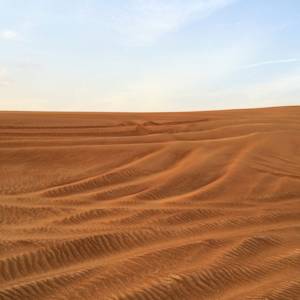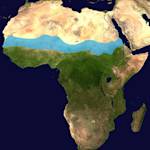The Sahara Desert, from the Green Sahara to the World's Largest Desert
6000 BCE - 2500 BCE • Northern Africa
"The Sahara has long been subject to periodic bouts of humidity and aridity. These fluctuations are caused by slight wobbles in the tilt of the Earth’s orbital axis, which in turn changes the angle at which solar radiation penetrates the atmosphere. At repeated intervals throughout Earth’s history, there’s been more energy pouring in from the sun during the West African monsoon season, and during those times—known as African Humid Periods—much more rain comes down over north Africa. With more rain, the region gets more greenery and rivers and lakes. All this has been known for decades. But between 8,000 and 4,500 years ago, something strange happened: The transition from humid to dry happened far more rapidly in some areas than could be explained by the orbital precession alone, resulting in the Sahara Desert as we know it today." There is a theory that this change was exacerbated by human settlement pastorialism, mimicing other patterns of desertification in history: "Wherever the archaeological record showed the presence of “pastoralists”—humans with their domesticated animals—there was a corresponding change in the types and variety of plants. It was as if, every time humans and their goats and cattle hopscotched across the grasslands, they had turned everything to scrub and desert in their wake." Today the Sahara Desert is host to a wide variety of biodiversity including 70 species of mammals, 90 species of birds, and 100 species of reptiles. Barbary sheep, camel, oryx, spotted hyena, dama gazelle, ostriches, chameleons, croccodiles, and scorpions are just some of the wildlife that make the desert their home, concentrating in the less harsher northern and southern regions. While the fauna in the Sahara is relatively sparse, with around 500 species, long rooted, hardy plants like date palms, tamarisks, and acacia are able to thrive in the desert conditions.
Quote: Lorraine Boissoneault, "What Really Turned the Sahara Desert From a Green Oasis Into a Wasteland?" Smithsonian Magazine, March 24, 2017.
Jay W. Sharp, "The Sahara Desert: Wildlife, Plants, People and Cultures," DesertUSA.
Image: Azer Koçulu azer, CC0, via Wikimedia Commons


Learn about Maya Lin’s fifth and final memorial: a multi-platform science based artwork that presents an ecological history of our world - past, present, and future.

Discover ecological histories and stories of former abundance, loss, and recovery on the map of memory.

Learn how we can reduce our emissions and protect and restore species and habitats – around the world.

See how art can help us rethink the problems we face, and give us hope that each one of us can make a difference.

Help make a global memorial something personal and close to home. Share your stories of the natural world.


